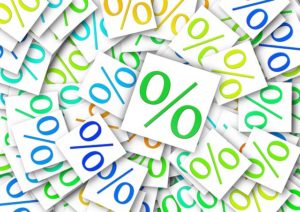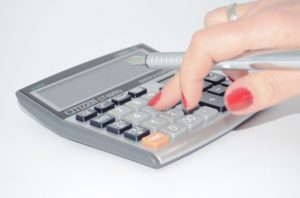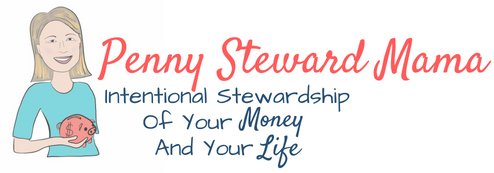
Tired of making payments every month on credit cards? Wouldn’t it be freeing to no longer be a slave to them? Here’s how to get rid your credit card debt and say “goodbye” forever!
Every month, sometimes multiple times a month, those dreaded bills come rolling in. Yes, the credit card bills. You put off looking at them for a few days. You’ve tried organizing them in the past, you’ve used balance transfers to save interest, but all your efforts have been futile. The balances are growing, as well as the monthly minimum payments.
How much does the average American household owe?
According to multiple sources, the average American household that keeps a balance on their credit cards owes around $16,000. That’s enough to make me squirm in my seat and to make me mad at the credit card companies that let us borrow so much to begin with. To live under that amount of credit card debt (or any amount, really) is a huge burden on our daily lives! And it could be keeping us from reaching our financial goals, like homeownership and retirement.
How much interest would that average American household be paying on their credit cards each month?
Here is an example: Let’s say your APR is 16%, you have a balance of $16000, and you pay $250 a month. A whopping $213.33 goes only toward interest!! Out of the $250 you paid, only $36.67 is going toward the principal. Ouch! $213.33 sure is a lot of hard-earned money just to be wasted on credit card interest. And that’s if the interest rate is “only” 16%. Many are much higher.

So what is the fastest way to get out of credit card debt?
Be mad at it! Be frustrated that these credit card companies are taking advantage of you by charging you an outrageous interest rate! They know you will never pay it off and they are making way too much money on you! Say “no more” and put your foot down.
As you are tracking your expenses each day and month, look at those payments you are making. Check your statement to see how much you paid in interest last month. Yikes! Look at how your balance is growing and not decreasing…double yikes! Realize that your money is much better off doing other things than making that payment and going toward interest every month. Get angry enough to pay it off!
You can do this! Next time you want to make an impulse purchase or buy something that is a want and not truly a need, stop! What if you paid that toward your credit card instead?
Now, realize that you didn’t get into credit card debt overnight. Most likely it happened slowly, over a long period of time. Know that you won’t get out of credit card debt overnight either. It will take time, and you will have to work at it. You will have to be in it for the long haul, and the more money you can throw at it each month, the faster it will be paid off.
If you have multiple credit cards, what is the best way to pay them off?
This is the most important step, so pay attention. The first step is to STOP USING THEM! Yes, you have to decide you are done with the credit cards. If you can’t pay for something with cash or your debit card, you cannot buy it. Remember: CASH OR DEBIT ONLY!
Beyond that, there are really two ways to pay off credit card debt: the snowball method and the avalanche method.
Snowball method:
 Make a list of each credit card and the balance. Organize them by smallest balance first, up to the highest balance. Each month, make the minimum payment on each one, except for the one with the smallest balance. Pay as much extra as you possibly can on that smallest one. Once it is paid off, roll what you were paying on that card into the next smallest balance. See how your debt snowball gets bigger and bigger as it keeps rolling?! The snowball method gives you momentum and quicker wins so you can see progress faster. You may pay a little more in interest than the avalanche method, but the psychological edge it offers can be a huge motivator for most people.
Make a list of each credit card and the balance. Organize them by smallest balance first, up to the highest balance. Each month, make the minimum payment on each one, except for the one with the smallest balance. Pay as much extra as you possibly can on that smallest one. Once it is paid off, roll what you were paying on that card into the next smallest balance. See how your debt snowball gets bigger and bigger as it keeps rolling?! The snowball method gives you momentum and quicker wins so you can see progress faster. You may pay a little more in interest than the avalanche method, but the psychological edge it offers can be a huge motivator for most people.
Avalanche method:

Organize your credit cards in order of interest rate, largest interest rate first, down to the smallest. Again, make minimum payments on each one, but for the avalanche method, you pay extra on the card with the largest interest rate. This will save you money in interest in the long run. However, if paying it off this way doesn’t sound super exciting to you or get you very motivated, then I would recommend going with the snowball method instead.
Is it possible to get a lower interest rate on my credit cards?
Another step that may help is to call customer service, talk to a supervisor, and ask them if there is any way they can lower the interest rate on your card. If you have had a certain card for a long time, they are more likely to honor this due to your loyalty. It won’t hurt to ask, and if you are considering a balance transfer to another card due to lower interest, you will especially have grounds to negotiate a lower rate with your current card. 
Whether or not you are able to lower your interest rate and no matter which payoff method you choose, your money behavior and habits still have to change so that your balance begins decreasing, rather than increasing. Which means you still have to come up with extra money to put toward them every month.
So where do you get extra money to put toward your credit cards?
You know what I’m going to say. I’m sure you didn’t even have to ask. You have to budget for it. Having a plan of action for your money is a necessity. If you don’t tell it where to go, it will go and be gone before you know it. Write down your plan of action.
What is the easiest way to budget, or create a plan of action, for your money?
 To put it simply, start with your income, subtract your upcoming expenses (bills due and purchases you need to make), and see what you’re left with (that’s the extra!) . You may need to review your last few months’ statements to make sure you don’t forget about something important. It usually takes about three months of working on it to get your budget somewhat fine-tuned, so don’t become discouraged too quickly.
To put it simply, start with your income, subtract your upcoming expenses (bills due and purchases you need to make), and see what you’re left with (that’s the extra!) . You may need to review your last few months’ statements to make sure you don’t forget about something important. It usually takes about three months of working on it to get your budget somewhat fine-tuned, so don’t become discouraged too quickly.
Especially when starting to budget for your very first time, I highly recommend to write out your budget on paper. But a great digital tool you can use to guide you is Dave Ramsey’s Every Dollar. It is free for the basic budgeting program and app, but you can pay for the upgraded version if you want to link to your bank accounts. The free option is really great to help you get your budget organized!
For detailed info on creating your very first budget, check out How to Create a Written Budget in Only 6 Steps!
Besides budgeting, where else can extra money come from?
In addition to budgeting, you can work on creating extra money. Sell anything you can, work extra shifts if possible, find a second job, discover ways to spend less on your everyday purchases…get creative! If you get mad enough at this credit card debt and are determined to pay it off, you will be surprised to see how much extra money you can come up with!
Have you ever done anything super creative to earn some extra income? Share in the comments!
Whether you have one small balance on a credit card, or multiple cards with varying balances, if you don’t pay them off every month, you are spending way too much on interest. Even more than that, those balances can rob you of financial freedom and peace of mind. My hope is that you realize this, become inspired to pay them off, and get rid of them as quickly as possible!
So go ahead and do it! Determine right now, this moment, you are ready to dump this credit card debt cycle for good. You are ready to pay with a debit card or cash only. Get clear on your goal (paying off the credit cards), your method to reach your goal (snowball or avalanche), and get started! Be specific and write it out! You are most likely to achieve it if it is written down. 
I can’t wait to hear about your progress as you start to pay off those credit cards! Keep me updated, and as always, steward intentionally.
Heather
P.S. For accountability with paying off debt, come join us in the private Accountability | Penny Steward Mama Facebook page. We would love to hear from you and encourage you!

